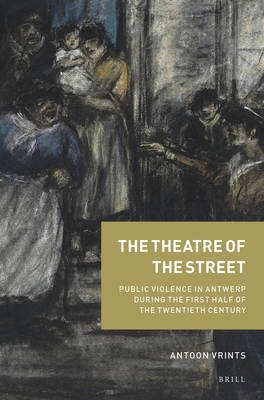
- Afhalen na 1 uur in een winkel met voorraad
- Gratis thuislevering in België vanaf € 30
- Ruim aanbod met 7 miljoen producten
- Afhalen na 1 uur in een winkel met voorraad
- Gratis thuislevering in België vanaf € 30
- Ruim aanbod met 7 miljoen producten
Zoeken
The Theatre of the Street
Public Violence in Antwerp During the First Half of the Twentieth Century
Antoon Vrints
€ 229,45
+ 458 punten
Omschrijving
In The Theatre of the Street: Public Violence in Antwerp During the First Half of the Twentieth Century Antoon Vrints offers a historical analysis of the meanings and functions of street violence in a modern European city. Commonly perceived as the senseless outcome of social disintegration in urban contexts, public violence appears here as a meaningful strategy to settle conflicts informally.
Making use of Antwerp police records, Vrints shows that the prevailing discourse on public violence does not pass the test of empirical facts. The presumed correlation between the occurrence of public violence and the decline of neighbourhood life must even be reversed to some extent. The nature of public violence paradoxically points to the crucial importance of neighbourhood networks.
Making use of Antwerp police records, Vrints shows that the prevailing discourse on public violence does not pass the test of empirical facts. The presumed correlation between the occurrence of public violence and the decline of neighbourhood life must even be reversed to some extent. The nature of public violence paradoxically points to the crucial importance of neighbourhood networks.
Specificaties
Betrokkenen
- Auteur(s):
- Uitgeverij:
Inhoud
- Aantal bladzijden:
- 416
- Taal:
- Engels
- Reeks:
- Reeksnummer:
- nr. 2
Eigenschappen
- Productcode (EAN):
- 9789004416925
- Verschijningsdatum:
- 12/12/2019
- Uitvoering:
- Hardcover
- Formaat:
- Genaaid
- Afmetingen:
- 157 mm x 239 mm
- Gewicht:
- 725 g

Alleen bij Standaard Boekhandel
+ 458 punten op je klantenkaart van Standaard Boekhandel
Beoordelingen
We publiceren alleen reviews die voldoen aan de voorwaarden voor reviews. Bekijk onze voorwaarden voor reviews.








